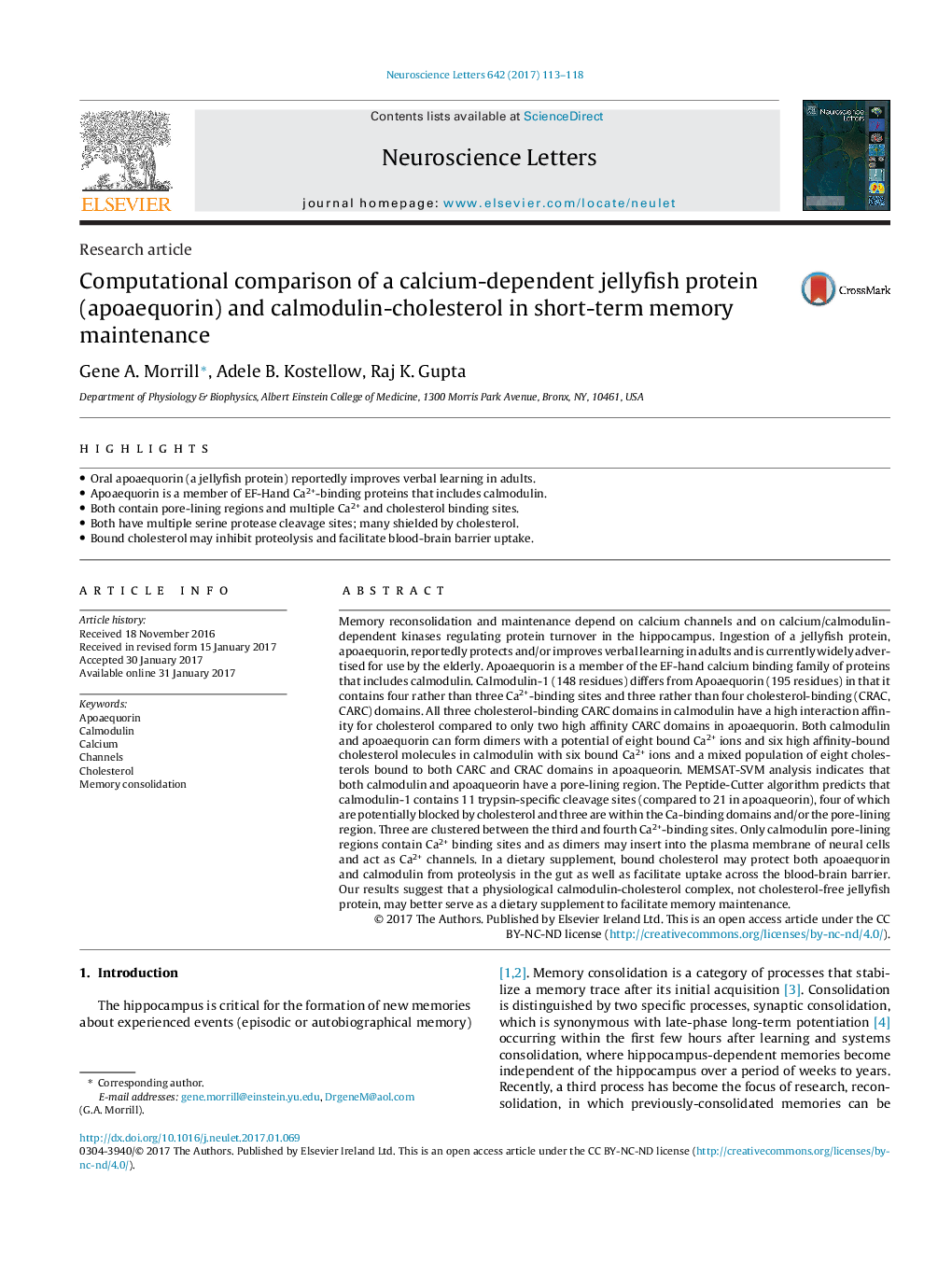| کد مقاله | کد نشریه | سال انتشار | مقاله انگلیسی | نسخه تمام متن |
|---|---|---|---|---|
| 5738676 | 1615057 | 2017 | 6 صفحه PDF | دانلود رایگان |

- Oral apoaequorin (a jellyfish protein) reportedly improves verbal learning in adults.
- Apoaequorin is a member of EF-Hand Ca2+-binding proteins that includes calmodulin.
- Both contain pore-lining regions and multiple Ca2+ and cholesterol binding sites.
- Both have multiple serine protease cleavage sites; many shielded by cholesterol.
- Bound cholesterol may inhibit proteolysis and facilitate blood-brain barrier uptake.
Memory reconsolidation and maintenance depend on calcium channels and on calcium/calmodulin-dependent kinases regulating protein turnover in the hippocampus. Ingestion of a jellyfish protein, apoaequorin, reportedly protects and/or improves verbal learning in adults and is currently widely advertised for use by the elderly. Apoaequorin is a member of the EF-hand calcium binding family of proteins that includes calmodulin. Calmodulin-1 (148 residues) differs from Apoaequorin (195 residues) in that it contains four rather than three Ca2+-binding sites and three rather than four cholesterol-binding (CRAC, CARC) domains. All three cholesterol-binding CARC domains in calmodulin have a high interaction affinity for cholesterol compared to only two high affinity CARC domains in apoaequorin. Both calmodulin and apoaequorin can form dimers with a potential of eight bound Ca2+ ions and six high affinity-bound cholesterol molecules in calmodulin with six bound Ca2+ ions and a mixed population of eight cholesterols bound to both CARC and CRAC domains in apoaqueorin. MEMSAT-SVM analysis indicates that both calmodulin and apoaqueorin have a pore-lining region. The Peptide-Cutter algorithm predicts that calmodulin-1 contains 11 trypsin-specific cleavage sites (compared to 21 in apoaqueorin), four of which are potentially blocked by cholesterol and three are within the Ca-binding domains and/or the pore-lining region. Three are clustered between the third and fourth Ca2+-binding sites. Only calmodulin pore-lining regions contain Ca2+ binding sites and as dimers may insert into the plasma membrane of neural cells and act as Ca2+ channels. In a dietary supplement, bound cholesterol may protect both apoaequorin and calmodulin from proteolysis in the gut as well as facilitate uptake across the blood-brain barrier. Our results suggest that a physiological calmodulin-cholesterol complex, not cholesterol-free jellyfish protein, may better serve as a dietary supplement to facilitate memory maintenance.
Journal: Neuroscience Letters - Volume 642, 6 March 2017, Pages 113-118